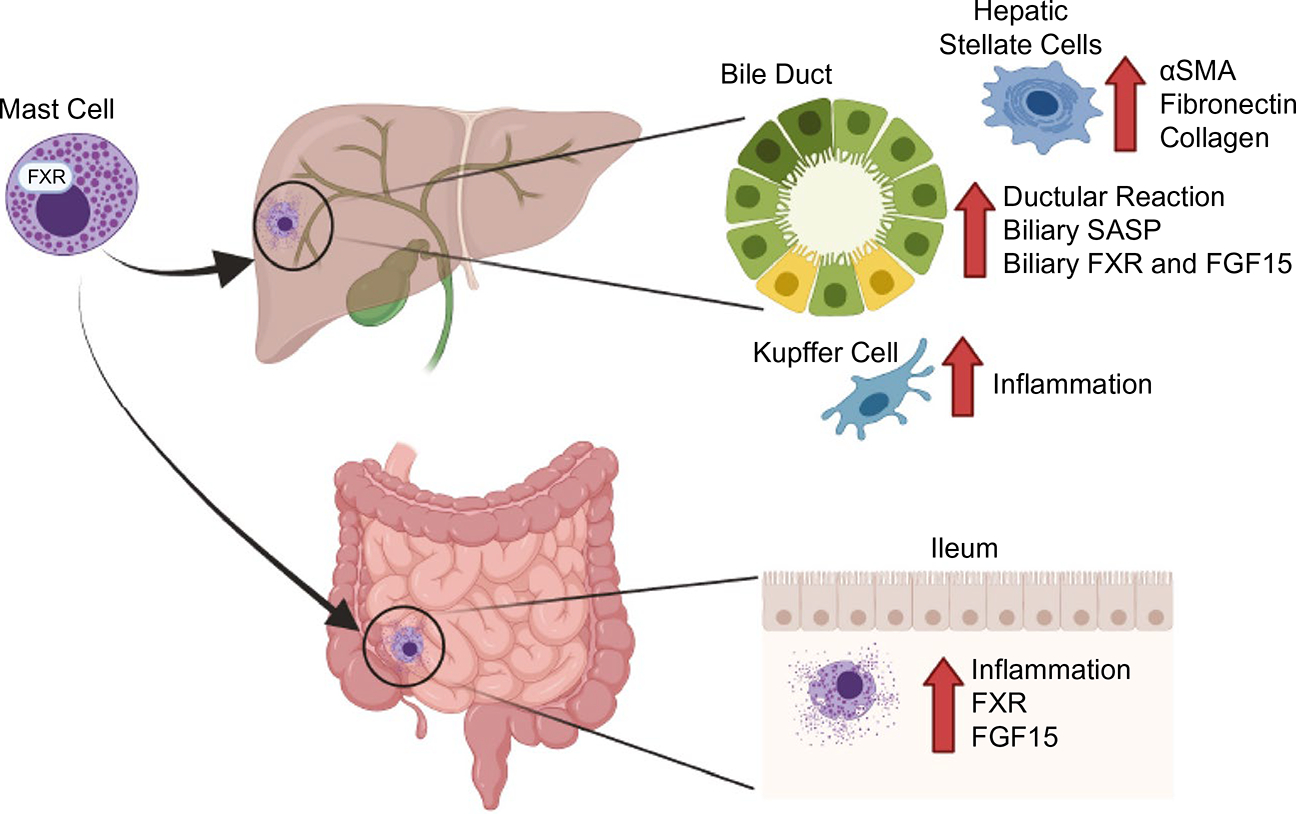FIG. 8.

Graphical abstract demonstrating the role of MC-FXR during cholestatic liver damage. Patients with cholestatic liver diseases, such as PSC, often present with comorbidities like IBD. We found that MCs, which express FXR and secrete FGFs and HA, infiltrate the liver and contribute to increased DR, biliary SASP, and FXR/FGF15 during cholestatic liver injury. Furthermore, MCs can activate HSCs to increase α-SMA, fibronectin-1, and collagen, exacerbating liver damage. In this study, we found that MCs infiltrate the intestine of cholestatic liver injury mouse models, increasing intestinal inflammation and altering the FXR/FGF15 axis, leading to dysregulated BA signaling. MCs may serve as an ideal target for therapeutic interventions for patients presenting with cholestatic liver injury and intestinal inflammation. Created with BioRender.com.
